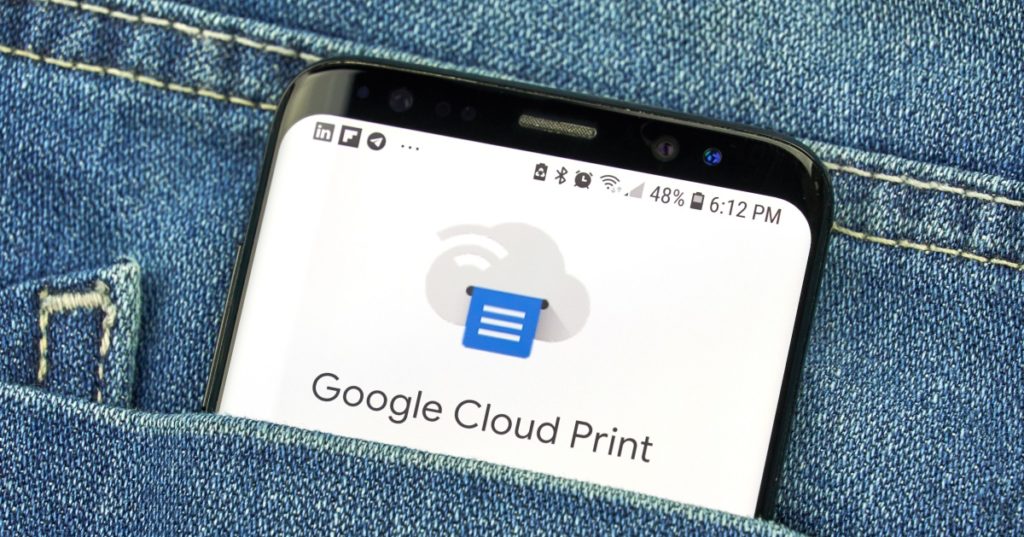Google Discontinuing Google Cloud Print by the End of 2020
The news spread recently like wildfire; Google is discontinuing its cloud printing service by the end of 2020. So, what can you do now? Is there an alternative to Google Cloud Print?

Specifically, the Google Support page and the message sent to some GSuite users say that Google will discontinue the Google Cloud Print service by December 31, 2020. As a result, all devices and applications that use Google Cloud Print will no longer be able to access this service from that date onwards.
Although never out of its beta run, Google’s print service is a valued and widely used tool, whether by consumers, educational institutions or businesses. Google Cloud Print does what users expect from such a solution; it enables easy printing to printers, regardless of device or location. That’s why almost every printer manufacturer supports Google Cloud Print.
Is Google Cloud Print Dead?
No, exactly the opposite is the case, as the legendary long beta phase shows printing is, unfortunately, anything but easy. The number of printers, applications and, operating systems is simply too large to solve cloud printing as an aside. Google would certainly have put more energy into the project if it had fit in with Google’s business model. But the printing process, if it’s to be quick and easy, simply involves far too little user interaction for Google to achieve a greater reach for its ads.
The fact that Google is phasing out Cloud Print now can pay off for Google. Google has an interest in ensuring that as many users as possible use their devices and solutions, especially its GSuite. The triumph of the Chromebook in the education sector is especially beneficial to Google. More widespread use in the enterprise market would be particularly useful for Google. Interestingly, Microsoft, thanks to its recently launched Windows Virtual Desktop, could even help. Especially as a Chromebook that can access a desktop from the cloud via HTML5 becomes an ideal working tool.
Nevertheless, let’s not get ahead of ourselves – Google Cloud Print has not been able to and cannot meet business requirements. The platform’s management capabilities are simply too limited. And an inadequate printing solution often causes significant headaches in the enterprise sector. That’s why Google’s decision to stay out of this area may be seen as a wise move.
The Time is Ripe for Enterprise Cloud Printing
The time is now ripe for enterprise cloud printing, as companies have just begun to enjoy and benefit from cloud printing. Surely printing is one of the last processes to migrate to the cloud. Apart from the fact that the printer will of course always be on-premises, cloud printing can drastically reduce the effort for companies when it comes to printing. The efficiency benefits delivered by the cloud should not end with printing though. More and more companies have understood this, but at the same time, they place high, albeit understandable, demands on cloud printing solutions. Google would have had to invest a lot to meet these demands.
With its withdrawal from the market, Google is creating room for alternative solutions. For software providers, a free solution from Google leaves little room for innovation. Google wasn’t able to offer aggressive pricing, nor a sophisticated online strategy. That’s why it’s not surprising that the number of alternatives is rather slim.
Google is giving users until the end of 2020 to deal with the end of its service. Overall, however, Google’s announcement is a positive signal that cloud services will continue to become more professional, even though they will then come with a fee. And it may well be not the last discontinuation of a free service.
Google Cloud Print Alternatives
While users and businesses have until the end of 2020, it makes sense to start thinking about a possible Google Cloud Print alternative now. To do this, first, take a close look at the current Google Cloud Print deployment scenario. Additionally, there are the many requirements that cannot currently be covered by Google Cloud Print, but which are desired. When looked at this way, it is much easier to make the right choice.
If you look at the field of solution providers, you have to be careful of the fact that on the one hand there are solutions that are based on Google Cloud Print and are of course also affected by the ending of the service. On the other hand, cloud printing is also understood to mean other scenarios, such as an online print shop or the simple management of printers via the cloud. These solutions are therefore out of the question when it comes to replacing Google Cloud Print.
Alternatives from ThinPrint
We at ThinPrint are convinced that cloud printing is the future. In time for when Google Cloud Print ends, we’ve combined all our cloud printing solutions in our ezeep product. On the ezeep website, you can find out about our vision for the future of printing.
Update, November 2020
ThinPrint launched its new platform ezeep Blue , in late 2020. Included are many new features for powerful enterprise cloud printing. With ezeep Blue, you can replace Google Cloud Print both quickly and easily.
Further resources for a successful changeover:
In our on-demand webinar ezeep: The Alternative to Google Cloud Print, we show exactly why ezeep is the most intuitive cloud-based print management solution. And how it not only ensures a smooth transition from Google Cloud Print but also offers more features and increased printing performance.
In our knowledge base you can find instructions on How to Switch from Google Cloud Print to ezeep.




